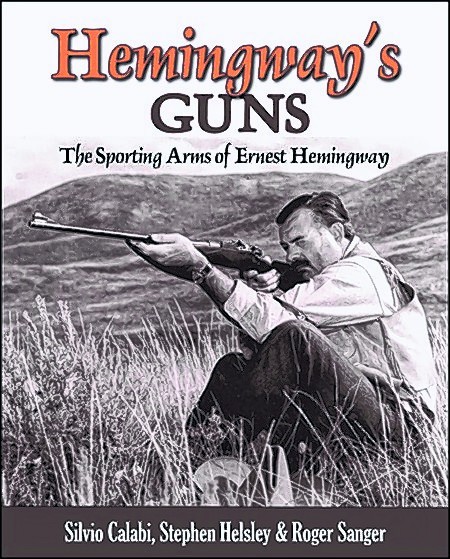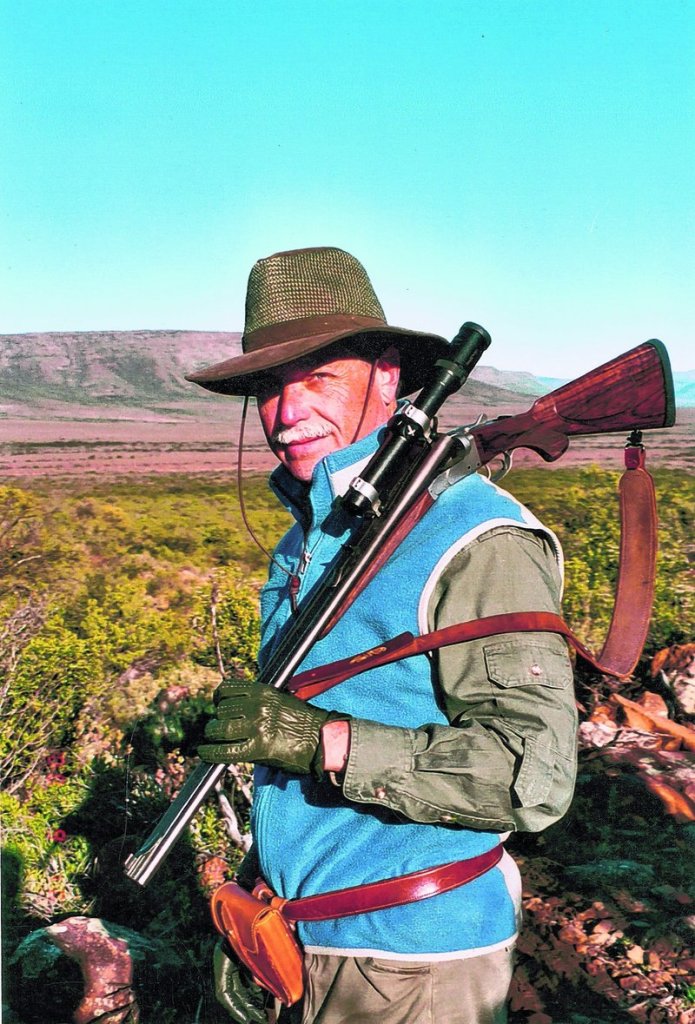Silvio Calabi was contacted a few years ago by an English professor who was writing a book on Ernest Hemingway’s travels and writings in Africa and wanted to know more about Hemingway’s guns.
Calabi is a long-time hunting and gun aficionado who worked for years as an editor at Fly Rod & Reel and Shooting Sportsman, two magazines owned by Maine-based Down East Enterprises.
He didn’t know much about Hemingway (1899-1961), but decided to do some research — and became fascinated. finding out more about the author’s guns — how and why he got them, where and how he used them — Calabi became more and more intrigued.
“I’ve always appreciated the history of guns and the history of safari hunting in Africa and so I couldn’t help but be aware of what Ernest Hemingway did in those fields,” Calabi said. “But the research I did opened up a whole new window on Hemingway for me, and I didn’t want to stop.”
So after doing research for someone else’s book, Calabi enlisted two friends and fellow gun aficionados, Steve Helsley and Roger Sanger, to start researching their own book on Hemingway. The result is “Hemingway’s Guns: The Sporting Arms of Ernest Hemingway” ($40, Shooting Sportsman).
Calabi, 60, lives in Camden.
Q: So is this just about Hemingway’s guns, or is it more of a biography from a different angle?
A: That’s exactly what it is (the latter). We debated how much of the book to do about Hemingway’s life and how much on his guns, and we decided to treat each with equal weight, to appeal to both Hemingway aficionados and hunters and shooters who know a bit about guns. When I was younger, I didn’t have much interest in Hemingway — from the little I knew, I thought he was egotistical and a near drunk.
But as we dug into his guns, how he acquired them and why, I realized this guy was not a phony. He knew how to use his guns, he was a very good shot, and he was a hell of a storyteller. He succumbed to a desire to embellish his hunting stories. He liked to say he wanted to make the story truer than the way it actually happened. To you and me, this sounds like a fisherman with a really big fish story, but he knew enough about shooting and guns to embellish a story in such a way as to create a story that was truly exciting and could well have happened.
Q: Can you give an example of how you learned something interesting about Hemingway through researching his guns?
A: One of the most unusual stories relates to his elephant rifle, the .577 Nitro Express; how he came by it and why. In the early days of World War II, Hemingway was living in Havana, Cuba, where there were a lot of refugees from the Spanish Civil War who had Nazi sympathies. (Hemingway had covered the Spanish Civil War as a journalist.)
At that time, the Caribbean was infested with German U-boats picking off oil tankers leaving refineries and bringing oil to England. The Germans were a long way from home, so for food they would surface next to fishing boats and either buy or seize food from fishermen.
Hemingway, with help of the American ambassador, had started an unofficial anti-spy ring in Havana. But he decided to take it to the next level, so he outfitted his fishing boat with the idea that he’d lure a German submarine and then open fire and lob explosives down the conning tower.
He wanted to outfit his fishing boat with .50-caliber machine guns, but the recoil would be too severe for his wooden boat. He was quite disappointed. His friend, Winston Guest, had this .577 Nitro Express elephant gun and said to Hemingway, “Maybe that would penetrate a sub.” Which is patently ridiculous, but you can imagine these two guys drinking all night long and thinking this sounded pretty good. So they went out with the gun.
They spent months at sea pretending to be fishermen, but never encountered a U-boat.
Q: Where did you get the information for this book? The stuff about the elephant gun, in particular.
A: We looked at magazines, books, journals; we interviewed people.
For the elephant gun, we started with the gun’s maker, in England, and found it was made in 1913 for an English cavalry officer. He intended to use it on a safari, but died in World War I in France. Then the gun shows up again in Africa, in 1933, owned by Winston Guest. Today, the rifle is on display at a bed and breakfast in Key West, Fla.
I interviewed Hemingway’s son, Patrick, who told me about how the rifle ended up on the fishing boat.
Q: How did Hemingway become so involved with guns and hunting?
A: From the 1920s to the 1960s, fine guns and safari hunting were a mark of status and something everyone talked about.
His grandfather had been a soldier and Civil War veteran. His father, a doctor, was an avid hunter. Both were extremely good shots. So there was no question that young Ernest would follow them and become an outdoorsman. (Hemingway and his father both died of self-inflicted gunshot wounds. Hemingway’s wife maintained his shooting was accidental.)
But the other great influence on him was Theodore Roosevelt, who was the hunting president. He had worked on a ranch as a youth, and after leaving office he want on a safari in Africa, which he wrote a book about. Hemingway and lots of other boys were just bowled over by Roosevelt; he picked up much of his sensibilities of hunting and conservation from him.
Staff Writer Ray Routhier can be contacted at 791-6454 or at: rrouthier@pressherald.com
Send questions/comments to the editors.




